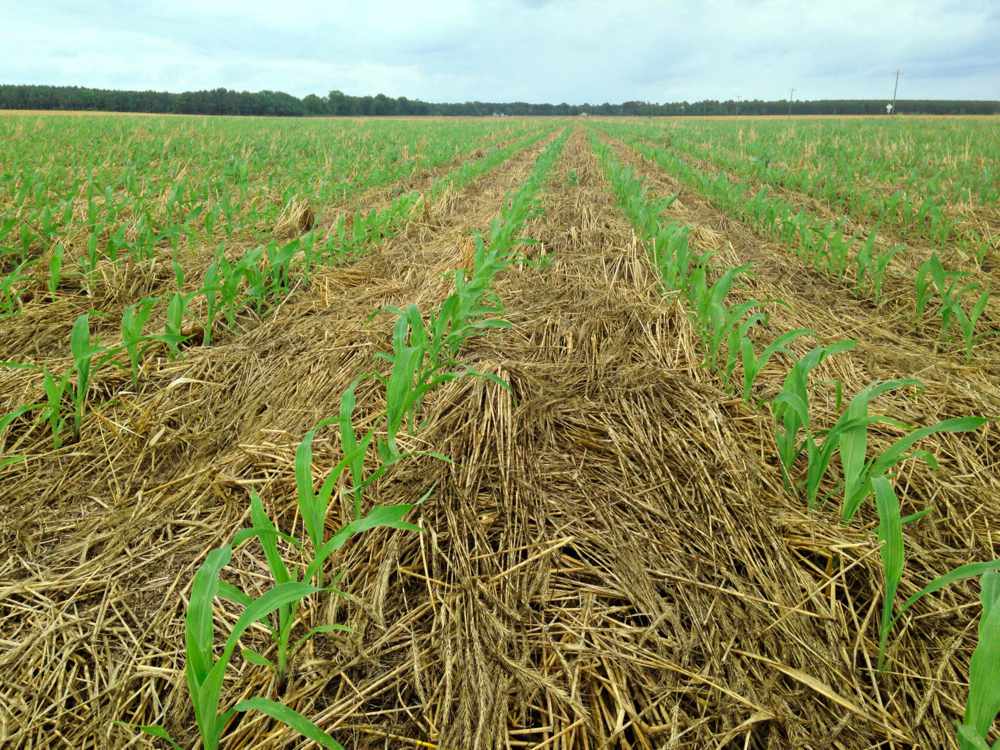Fewer of America’s large-scale corn and soybean farmers are planting cover crops this year than last, said a Purdue University survey on Tuesday.
Fewer of America’s large-scale corn and soybean farmers are planting cover crops this year than last, and nobody says they’re doing it to lock carbon in the soil, said a Purdue University survey on Tuesday. Cover crops, long promoted as a way to improve soil health, have more recently been promoted as an agricultural practice that mitigates climate change and could be a new source of income.
Some 52 percent of corn and soybean growers told the monthly Ag Economy Barometer that they currently plant cover crops, a 5-point drop from 2022 and a return to 2021’s levels. Four of every 10 cover-crop users are relative newcomers, with five years or less of experience with the crops.
A minority of cover crop growers, 16 percent, say they plant the crops on more than half of their land, compared to 23 percent last year.
Corn and soybeans accounted for 53 percent of the nearly 319 million acres devoted this year to the two dozen “principal” U.S. crops. The list includes major row crops, such as wheat, cotton, and rice, as well as hay, tobacco, peanuts, sunflowers, and sugarcane.
The Biden administration has launched a $3.1 billion climate-smart initiative to encourage farmers to adopt practices that reduce greenhouse gas emissions or sequester carbon, and to develop markets for the resulting products. At the same time, the private sector is wooing farmers to sign carbon contracts to sequester carbon dioxide in the soil. Growers have complained the payment rates are too low for the work involved.
When Purdue asked what motivated them to plant cover crops, 65 percent of farmers checked the response “improve soil health,” 23 percent chose “improve erosion control,” 3 percent selected “improve water quality,” and zero percent said “carbon sequestration.” Nine percent chose “other.” Growers were allowed to choose multiple answers.
“Farmers who tried planting cover crops and chose to discontinue their use pointed to varied reasons for dropping cover crops from their rotation, including saying it was not profitable, followed by hurts crop yields, insufficient soil benefits, and a lack of resources to plant cover crops,” wrote agricultural economists James Mintert and Michael Langemeier, who oversee the barometer. “Interestingly, just over half of producers who discontinued planting cover crops said there were ‘other’ reasons for not planting cover crops in addition to those provided in the response list.”
Among the reasons growers bypass cover crops are lack of compatibility with their cash crop rotations, lack of time to incorporate the crops into their operations, the cost of equipment for planting the crops, and to conserve water for income-earning crops.
Nearly one in five of the participants in the Purdue survey said they planted cover crops in the past and roughly one in three said they never planted cover crops.
Among cover-crop growers, large majorities over three years said the crops “improve soil health and crop yields” when given five options to described their experience with the crops. Some 81 percent chose that description in 2021, 74 percent in 2022 and 77 percent this year.
The Ag Economy Barometer, a gauge of farmer sentiment, fell 9 points in the past month to a reading of 106, the lowest in four months and below the rolling 12-month average of 117.
“Worries about the risk of declining prices for crops and livestock along with ongoing concerns about high input costs and interest rates weighed on producer sentiment this month,” said Mintert and Langemeier.
Purdue interviews operators with production worth at least $500,000 a year for the barometer. USDA data say the largest 7.4 percent of U.S. farms top $500,000 in annual sales. The survey has a margin of error of plus or minus 5 percent.
The Ag Economy Barometer is available here.
Source : Successful Farming

